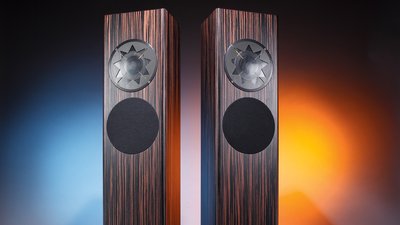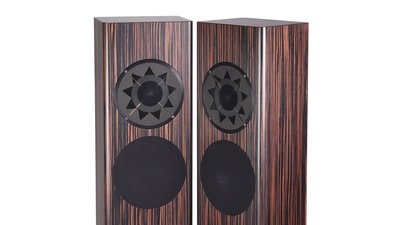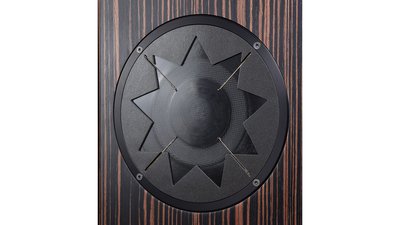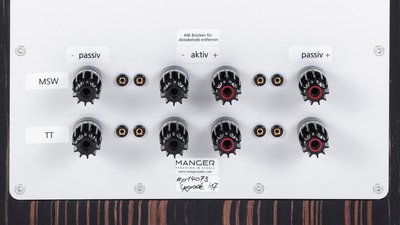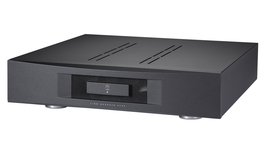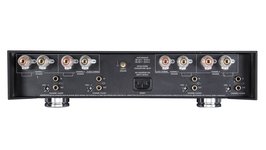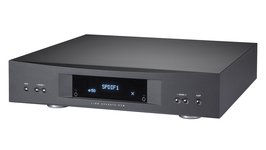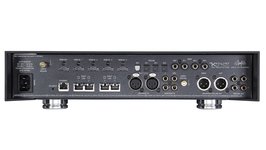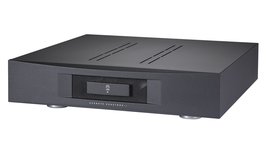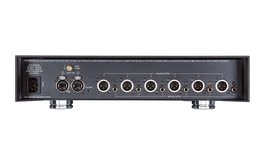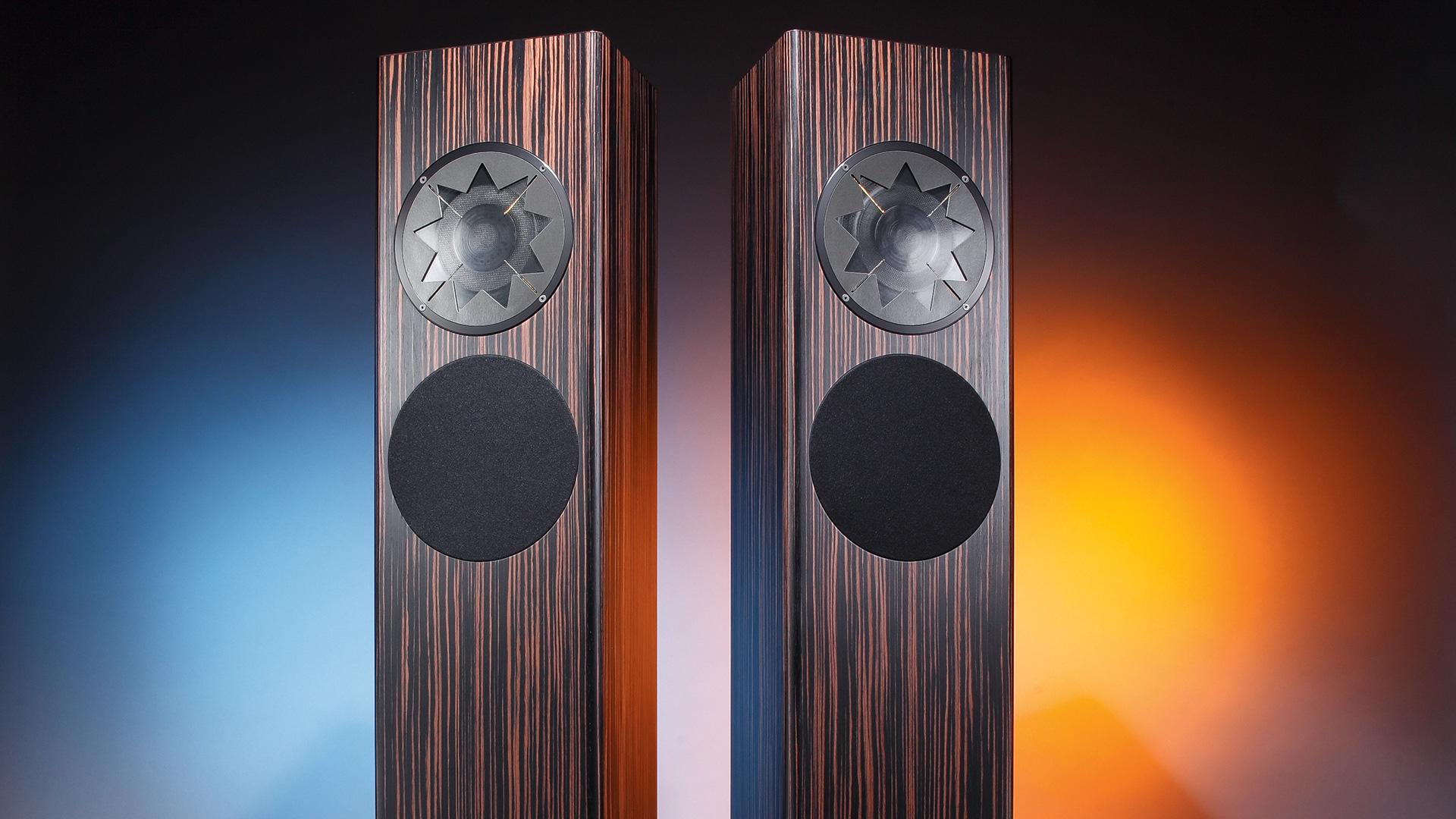
Active/Passive Floorstanding Speaker Test
Manger P1 Review (+Linn Electronics)
Systematic Listening – What would you like it to be: active or passive? With or without digital processing? And if DSP – Scottish or German? Join us for a ride through the world from Linn to Manger.
The Scots from Linn are considered to be a leading digital high-tech brand, notwithstanding that the company's reputation is based on the analog legend LP 12. After all, founder Ivor Tiefenbrun and his team were the first to propagate streaming as THE source of future high-quality music listening. They were also the first to implement the consequences and discontinued the production of their world-renowned CD players. Reason: streaming in HiRes sounds better. Quite some time had to pass until the world got this and until the equation streaming = MP3 quality was driven out of the minds of music lovers. However, in the end the economic success of Linn's strategy proved them right.
Today, the Scots are one of the very few hi-fi manufacturers in the world whose production processes could hold their ground even before the eyes of the automotive industry and which manufacture according to the strict worldwide ISO standards. This is all the more impressive given that Linn is still an independent, owner-managed medium-sized company and not a stock-exchange listed corporate group.
Opposites in the team
In contrast, the small Lower Franconian manufactory Manger is structured and positioned completely differently. Founded in the 70s by Josef W. Manger, the father of today's boss and development manager, the graduate engineer and physicist Daniela Manger.
The trigger for Manger's incentive to develop a new type of loudspeaker was his realisation that an instrument reproduced via loudspeakers lost much of its natural sound. The main reason was mechanical energy storage in dynamic loudspeakers. As a result, he developed a plate diaphragm that behaved electrically like a resistor but was able to play in time.
At the time, a major disadvantage of the design was its small efficiency – it measured only 74 dB. This not only required amplifiers with huge power reserves on the one hand, but on the other hand also set narrow mechanical limits to the possible maximum level.
Daniela Manger rightly points out with some pride that the latest Manger chassis is very effective with 91 dB of efficiency. The frequency response is also different today than in the past and ranges from 360 to 45,000 Hertz. And it can also reproduce short-term peak levels of up to 116 dB without distortion – a figure that we have not tested in practice in consideration of our ears ...
Franconian Craftsmanship...
While in Scotland devices are manufactured in the most modern production facilities and in large quantities, though still with a lot of manual work and a large depth of in house production, the situation is somewhat different with the Franconians from Manger. In a small team, each chassis is built completely by hand. Even the winding of the voice coils is done with great care by hand, the membrane material, the membrane and even the magnet system are built there by the company itself.
And precision in the micrometer range is in demand everywhere. Even the type and quantity of adhesive applied is included in the calculations and measurements of the tolerances. Unlike the dynamic chassis, the Manger converter does not require a centering or something similar.
German thoroughness
With German thoroughness, they have also developed the appropriate devices and machines themselves in order to come as close as possible to the goal of building loudspeakers that play in time and thus achieve a natural and neutral reproduction. Daniela Manger puts it this way: we build loudspeakers without dye or flavor enhancer.
A high goal, which the as dainty as energetic lady formulates there. However, when you know that a respected scientist like Professor Milind N. Kunchur, physicist and astronomer from the University of South Carolina, has published studies in which he could prove that the human auditory system reacts to time deviations of just six microseconds, you are inclined to attach a certain relevance to Manger's remarks. The professor's topics range from superconductors and nanostructured materials to his hobby: high fidelity and everything to do with audio.
For our "test series" Manger delivered us a very fine veneered P1 floorstanding speaker to our listening rooms. It was specially equipped for our project with a connection terminal for optional active or passive operation.
Why we decided for the managers as partners of the Linn system instead of completing it with Linn boxes you ask? Because Manger is one of the few manufacturers that have managed to adapt the Linn-Exakt system to the Manger boxes with its own software programming exactly according to its own ideas without relying on the programming of the Scottish colleagues.
Linn themself have written programs for all their own loudspeakers as well as for speakers of many other brands. In addition, there is data for the "Space Optimization" program for around 1000 other loudspeakers from a wide variety of manufacturers, by means of which the Scots can electronically adapt the loudspeakers to room and placement conditions.
Linn has also thought of multichannel fans and offers a DSP board for 7.1 systems for a moderate surcharge of 1430 Euro. All devices come with a five-year warranty, with an upgrade you get another five years.
As you can see, Linns' way of thinking is still quite unusual for the hi-fi world, at least for the time being. More than two decades ago, Linn was already convinced that loudspeakers should be active whenever possible. Already then, they sensed the source of many a sound reduction in the passive crossover.
The Exakt system was an important step forward, digitizing the active crossover on the one hand and programming it for a large number of their own and third-party loudspeakers on the other. This way they can compensate for errors in the loudspeakers and drivers as well as any manufacturing tolerances.
In order to give it the greatest possible flexibility, Linn also offers the manufacturers the option of adding a self-written curve to their speaker profiles on Linn-'s own server. The signal is just converted back into an analog signal at the output of the active crossover right before the power amplifier, which then drives the loudspeakers.
In order to check whether and how this works and how the interaction with other loudspeakers elicits these tonal advantages, STEREO premium partner and Linn specialist Reiner Pohl brought us a complete Linn system consisting of streaming preamplifier Akurate DSM, active crossover Akurate Exaktbox 6 and the four-channel power amplifier Akurate 4200. He even set up the complete system in cooperation with Daniela Manger in our larger listening room.
The streaming preamplifier costs 8900 Euro, the active crossover 5900 Euro and the power amplifier 6250 Euro. Since in an active Exakt system the D/A conversion takes place in the Exaktbox, the streaming preamplifier is available in a version without DAC and analogue output stage under the name System Hub for only 3225 Euro.
Active or passive
After the test devices had all been meticulously set up and wired, the excitement in the listening room grew – after all, we do not carry out such an experiment every day. Starting in traditional passive formation, the music was supplied by Qobuz as well as by CD. As a special feature, it should be noted that the operation was in bi-amping mode, i.e. all four power amplifier channels with 200 watts sine power each were in use.
In the first few minutes, the writer of these lines had the same experience as always when listening to a Manger speaker: It takes a bit of time to tune the ears to the Manger sound pattern, which might have something to do with the different way in which sound is generated and radiated. It is very similar as with dipole radiators, preferably magneto- or electrostats. After this short familiarization phase, however, the Manger showed that it is quite rightly regarded as something very special, and that it has clearly gained in quality compared to prvious versions. The better is the enemy of the good!
The current version of the P1 plays in a very relaxed and easy way. Any nervousness or tension is alien to it. At the same time, however, it does not appear indifferent or emotionless, but shows itself to be a committed supplier of music. As far as resolution is concerned, the current version also seems to have improved; it sounds open, but without even a pinch of sharpness. As expected, the P1 gained a lot of bonus points when it came to spatial imaging.
When a loudspeaker is optimized for time-correct reproduction as consistently as only a few competitors, you hardly expect anything other than a precise depiction of the recording situation and the irresistible urge to tap with the beat. An expectation that the Manger's fulfilled excellently, especially since not only the tonality of acoustic instruments from violin to piano, from guitar to saxophone and from trumpets right across all genres was perfectly in tune, but since the bass also connected to the broad-band Manger driver in a powerful but agile manner. At this point, we would have been almost completely happy if there hadn't been the active option luring us.
A small step?
We didn't need to listen long, but we had to take a deep breath afte listening to the previously played tracks again with the settings written by Linn for the Mangers. The differences were very clearly audible. A considerable step towards more grip, more dynamics and attack was noticeable.
Though we had already found the sound to be homogeneous and "as if made of one piece" before, this step showed us what performance the Manger was actually capable of thanks to the Linn active crossover. Let's take Cecilia Bartoli as an example: her "Lascia chío pianga" by Händel is a pleasure on any proper system thanks to her vocal artistry. However, it is by no means always an unclouded one, since contours are often fused, bodies of sound too emaciated or too voluminous, instruments with different timbres very similarly depicted, others their typical character at least rudimentarily stolen by discoloration or by being too scratchy/aggressive. All these impressions were avoided by the passive version of this system. However the surcharge of almost 6500 Euro for the active crossover Exakt Box 6 proved to be a worthwhile investment. Johnny Griffin's Quartet, for example, played the "Kerry Dancers" with even more fire. This was largely due to the now emerging ability to depict the finest dynamic gradations in a much more differentiated way. You didn't even have to listen loudly to hear the enormous power and level reserves of the system – it clearly sounded more real and just better. And the bass was even clearer, drier and more powerful than before.
To us, the differences between Linn's and Manger's tuning seemed nearly marginal and almost in the range of individual preferences. Nevertheless it is of course to be welcomed that a manufacturer wants to give his products as much as possible of their basic character within the Linn system and does not rely on the linear phase filters with contant group delay of Linn. The fact that we didn't find the influence so huge was probably mainly due to two things: the high neutrality and joy of playing of the Manger speakers and the really big quality leap between passive and active.
After all, the Linn system has another trump card up its sleeve: its implemented "Space Optimization" software, which, fed with the data of the room, can add to the sound and even compensate for unfavourable installation conditions. In any case, we have broadened our horizons and have accommodated this system with great enthusiasm in the listening room as it plays as versatile as convincing.
Verdict Manger P1
Already the passive version of the Manger plays excellently. But when activated in combination with the Linn electronics, there is a clearly audible increase in sound, which is definitely worth a visit to your dealer. Versatility and manufacturing quality are outstanding.
Technical Details Manger P1
Floorstanding speakers (active)
Manger P1
Price: from 25000 € (Last check: 31.10.2021)
Dimensions WxHxD: 27 x 118 x 24 cm
Warranty: 5 years
Manufacturer: Manger
General Data
Measurement Values
| Lower cut-off frequency (-3dBSPL): | 32 Hz |
| Distortion factor at 63/3k/10k Hz: | 0.2/0.1/0.1 % |
| Sound pressure characteristic (at 200 mV): | einstellbar dBSPL |
| Power consumption Idling: | 20 W |
Stereo Test
Sound Level Active speaker: 97%
Price/Performance
Lab Comment
As was to be expected, the step response is near perfect; the frequency response is balanced even in our listening room. Distortions are at the measurement limit.
Features
Can be operated as passive version or as actuve version with external Linn electronics. Available in matt or high-gloss finishes as well as in various wood veneers. For a rental fee of 180 Euro, trial listening at home is possible.
Test Devices
CD-Player: T+A MP3100 HV
Streaming-Pre Amp: Linn Akurate DSM; Linn System Hub
Active Crossover: Linn Akurate Exaktbox 6
Power Amp: Linn Akurate 4200
Speaker: Manger P1 aktiv/passiv; Progressive Audio Pearl
Cable: Linn; Audioquest
What we've heard

Johnny Griffin Quartet – The Kerry Dancers:
A tenor saxophone like from another world – artistically and tonal great!
 MAGAZINE
MAGAZINE